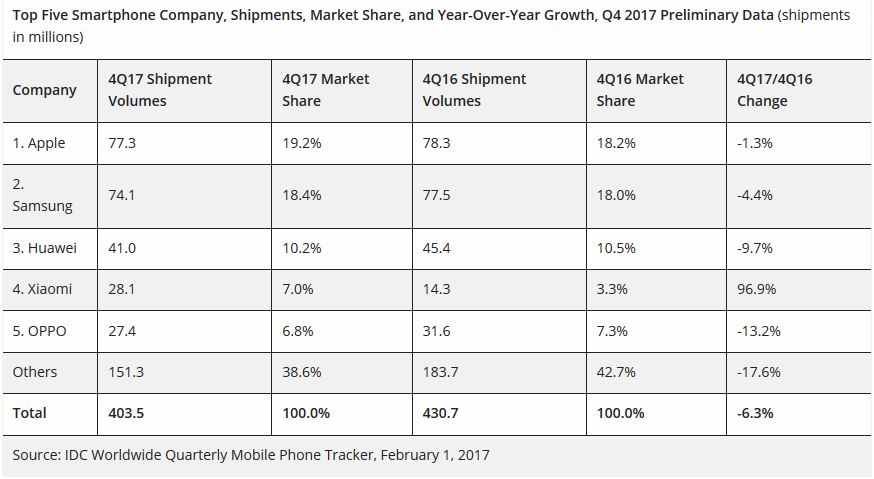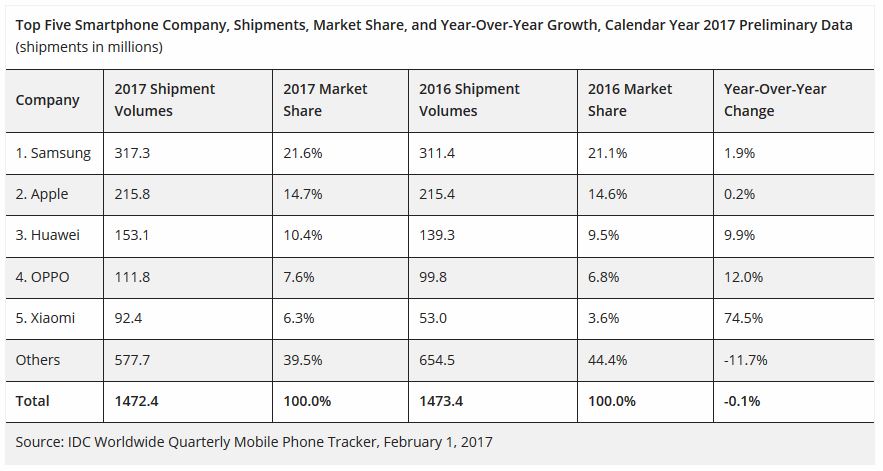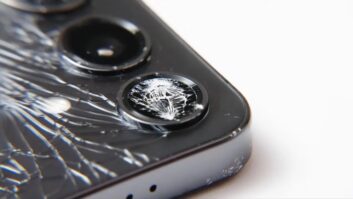A slower than expected holiday quarter closed out 2017, bringing minimal change to the overall worldwide smartphone market vs. the prior year, according to data from IDC’s Worldwide Quarterly Mobile Phone Tracker.
While Apple moved past Samsung to reclaim the top slot in global smartphone market share for the fourth quarter, Samsung remained the overall leader in the worldwide smartphone market for 2017. The Korean giant shipped 74.1 million units in 4Q, down 4.4 percent, compared with the 77.5 million units from last year. Samsung finished the year with 317.3 million shipments, up 1.9 percent from the 311.4 million shipments in 2016.

With the pending arrival of Samsung’s next flagship Galaxy S9 this month, the company is poised to maintain its overall lead.
Apple experienced a slight downturn from the previous holiday quarter as iPhone volumes reached 77.3 million units, a year-over-year decline of 1.3 percent. Volumes were still enough to push Apple past Samsung and back into first place for the quarter on the strength of iPhone 8, 8 Plus and X sales.
According to IDC, Apple continues to prove that having numerous models at various price points bodes well for bringing smartphone owners to iOS. Although demand for the new higher-priced iPhone X may not have been as strong as many expected, the overall iPhone lineup appealed to a wider range of consumers in both emerging and developed markets. Apple finished second for the full year in 2017 shipping 215.8 million units, up 0.2 percent from the 215.4 million units shipped in 2016.
See: Research Confirms The U.S. Cellphone Market Is A Two-Horse Race
Overall, smartphone vendors shipped a total of 403.5 million units during Q4 2017, resulting in a 6.3 percent decline vs. the 430.7 million units shipped in prior-year period. For the full year, the worldwide smartphone market saw a total of 1.472 billion units shipped, declining less than 1 percent from the 1.473 billion units shipped in 2016. Developed markets such as China and the United States both witnessed a decline during the quarter as consumers appeared to be in no rush to upgrade to the newest generation of higher-priced flagship devices.

“The latest flock of posh flagships may have had consumers hitting the pause button in the holiday quarter,” said Anthony Scarsella, research manager, mobile phones at IDC. “With ultra-high-end flagships all the rage in 2017, many of these new bezel-less wonders proved to be more of a luxury than a necessity among upgraders. Even though we have seen new full-screen displays, advanced biometrics, and improved artificial intelligence, the new and higher price points could be outweighing the benefits of having the latest and greatest device in hand.”
“In the presence of ultra-high-end flagships, the still high-priced flagships from the previous generation seemed far more palatable to consumers in 2017,” said Jitesh Ubrani, IDC senior research analyst. “Many high-profile companies offered their widest product portfolio ever in hopes of capturing a greater audience. Meanwhile, brands outside the top five struggled to maintain momentum as value brands such as Honor, Vivo, Xiaomi and Oppo offered incredible competition at the low end, and brands like Apple, Samsung and Huawei maintained their stronghold on the high end.”













